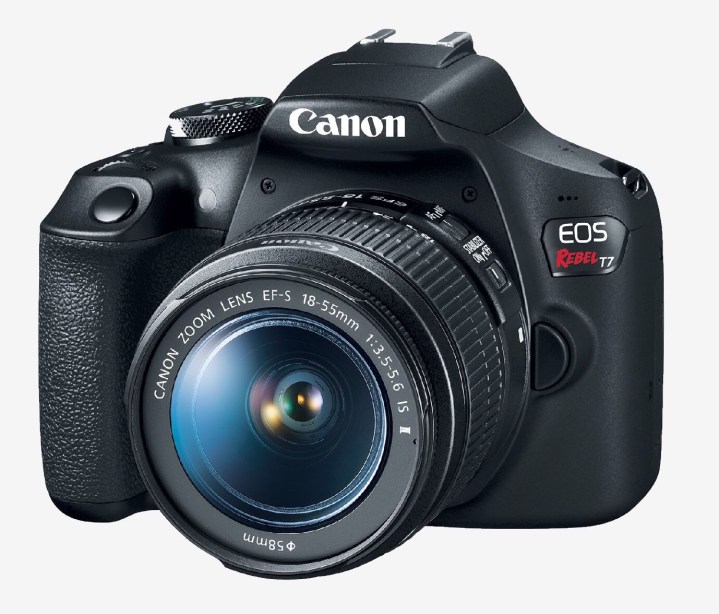
It’s what’s inside that counts, right? With Canon’s latest entry-level camera, the EOS Rebel T7, let’s hope so. The new DSLR stays all but identical to its predecessor — the EOS Rebel T6 and the tweaked Rebel T6i — on the outside. That said, most of what’s on the inside is unchanged, as well.
Announced on February 25 (alongside the EOS M50 mirrorless camera and 470EX-AI flash), the T7 takes a minor evolutionary approach with only a single, but notable update over the T6: the sensor. At the heart of the T7 is a 24-megapixel CMOS sensor, a substantial increase from the 18MP sensor inside the T6.
Other than that, the other specs and features are pulled straight from the Rebel T6, including the older Digic 4+ processor and nine-point autofocus system. Continuous shooting speed tops out at three frames per second, for a maximum burst of just 11 frames for RAW photos or 150 for JPEGs. Although the sensor is new, ISO range is just 100 to 6,400, expandable to 12,800 — respectable, but certainly not up to par with Canon’s other DSLRs.

Video performance is also unchanged, with the T7 capturing Full HD 1080p at both 24 and 30 frames per second or 720p at 60 fps. Canon estimates that when shooting in 1080p, you can expect about one and a half hours of recording with a 32GB memory card, with an estimated file size of 340MB per minute.
On the rear of the camera, you’ll find the same controls and fixed, three-inch, 920,000-dot LCD monitor used for navigating the menu, composing shots when in live view, and reviewing photos and video already captured.
Like the T6, the T7 features Canon’s multiple intelligent automatic modes, which make it easy to capture specific scenes using the appropriate settings.

One interesting tidbit of news to note is that, although the sensor is the exact same size and resolution as that in the EOS M50 mirrorless camera, Canon states the sensors are not the same. Notably, the Rebel T7’s sensor lacks Dual Pixel Autofocus (DPAF), which is found on the M50 as well as many of of Canon’s other mirrorless cameras and DSLRs. DPAF allows for fast, smooth autofocus performance in live view, which is particularly useful for video.
The EOS Rebel T7 is set to go on sale in April 2018. It will be available as a lens and body kit alongside the EF-S 18–55mm f/2.5–5.6 IS II for an estimated retail price of $550.
Editors' Recommendations
- Canon EOS R5 vs. Sony A7S III vs. Panasonic S1H: Best full-frame for video?
- Canon EOS Rebel T7 vs. Canon EOS Rebel T7i: One letter makes a big difference
- Canon EOS RP vs. Sony A7 III: Can Canon’s cheap shooter keep up with the best?




